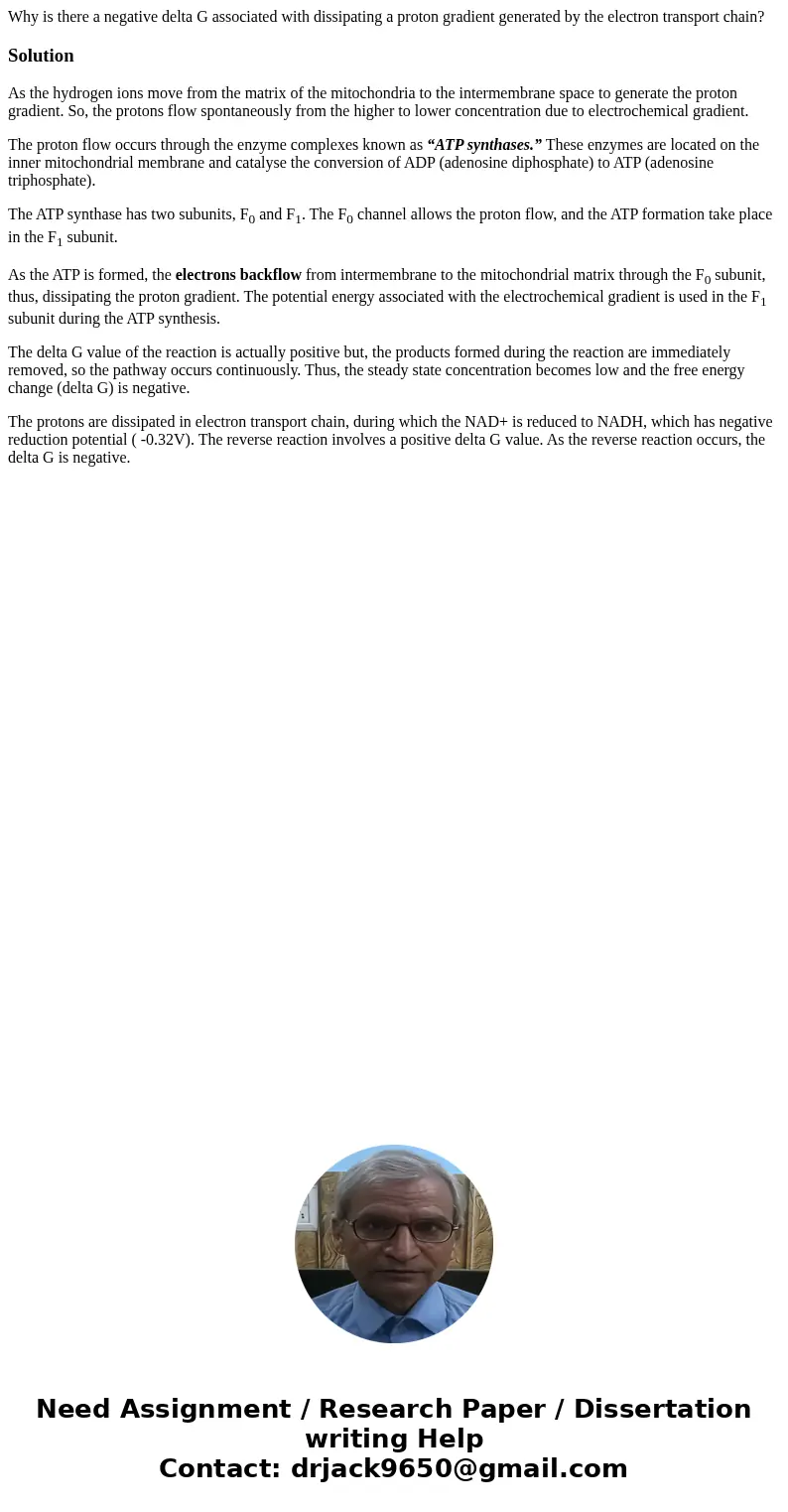Why is there a negative delta G associated with dissipating
Why is there a negative delta G associated with dissipating a proton gradient generated by the electron transport chain?
Solution
As the hydrogen ions move from the matrix of the mitochondria to the intermembrane space to generate the proton gradient. So, the protons flow spontaneously from the higher to lower concentration due to electrochemical gradient.
The proton flow occurs through the enzyme complexes known as “ATP synthases.” These enzymes are located on the inner mitochondrial membrane and catalyse the conversion of ADP (adenosine diphosphate) to ATP (adenosine triphosphate).
The ATP synthase has two subunits, F0 and F1. The F0 channel allows the proton flow, and the ATP formation take place in the F1 subunit.
As the ATP is formed, the electrons backflow from intermembrane to the mitochondrial matrix through the F0 subunit, thus, dissipating the proton gradient. The potential energy associated with the electrochemical gradient is used in the F1 subunit during the ATP synthesis.
The delta G value of the reaction is actually positive but, the products formed during the reaction are immediately removed, so the pathway occurs continuously. Thus, the steady state concentration becomes low and the free energy change (delta G) is negative.
The protons are dissipated in electron transport chain, during which the NAD+ is reduced to NADH, which has negative reduction potential ( -0.32V). The reverse reaction involves a positive delta G value. As the reverse reaction occurs, the delta G is negative.

 Homework Sourse
Homework Sourse